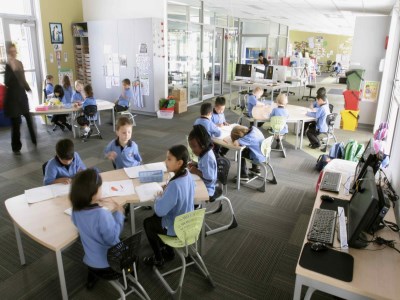
Today, governments, corporations and communities are striving to reduce their carbon footprint and combat the impact of climate change – and schools are no exception.
With heat and power being emitted from classrooms, students and staff travelling to and from school, waste management, and the supply chain activities of companies providing goods and services, schools are contributors to this issue whether they like it or not.
Recognising this, some schools have developed eco-friendly initiatives to create a more environmentally sustainable community. However, electricity – one of the leading sources of greenhouse gas emissions – is integral in all schools.
The dual issue of maintaining a greenhouse contributor that can also be very costly is something that all school leaders are no doubt aware of.
With this in mind, industrial company, Legrand Australia, has developed a way that principals can reduce their carbon footprint…and save money doing it.
Legrand’s Vortex LED Highbay and Luminess LED lights have been designed to replace conventional metal halide or fluorescent lights respectively in schools, factories and warehouses.
“In a school environment, this light would be used in gymnasiums and sports halls, which use metal halide lights, which use a lot of power,” Mahmoud Kebbi, Legrand’s category manager of commercial and emergency lighting, told The Educator.
“By switching to LED, principals can half the power their schools use, saving money and being environmentally friendly. When Legrand Australia upgraded its warehouse, our calculated savings were up to 58%. We also had an improvement in lighting levels.”
Kebbi pointed out that as most schools hold their major exams in sports halls, the Vortex LED could have potential benefits, making the lighting in these facilities both easier, and cheaper, to maintain.
As for classrooms, which use fluorescent lighting, Kebbi said that switching to Luminess LED can extend lamp life, reduce maintenance costs and lower power usage.
“Luminess LED has a 50,000-hour lamp life, whereas fluorescent lights have just 20,000 hours,” he said.
“Luminess LED consumes 40 Watts of power where in a school they would be using 2x36W fluorescent which equates to around 80 watts of power used [as there is around 4 watts of losses due to the control gear used to energise these lamps], so again up to half the power consumption.”
Kebbi said that the NSW Government’s IPART Energy Savings Scheme means that any schools switching to Vortex and Luminess LED can receive a rebate.
“A fair bit of the initial cost of a school’s energy upgrade could be absorbed by this rebate scheme,” Kebbi said, adding that the school’s initial capital costs would come down dramatically.
Kebbi said that for any schools interested in making the switch and receiving the rebate, all they would need to do is get a quote of install. From there, a calculation method takes place to work out the rebate provided for the upgrade.


